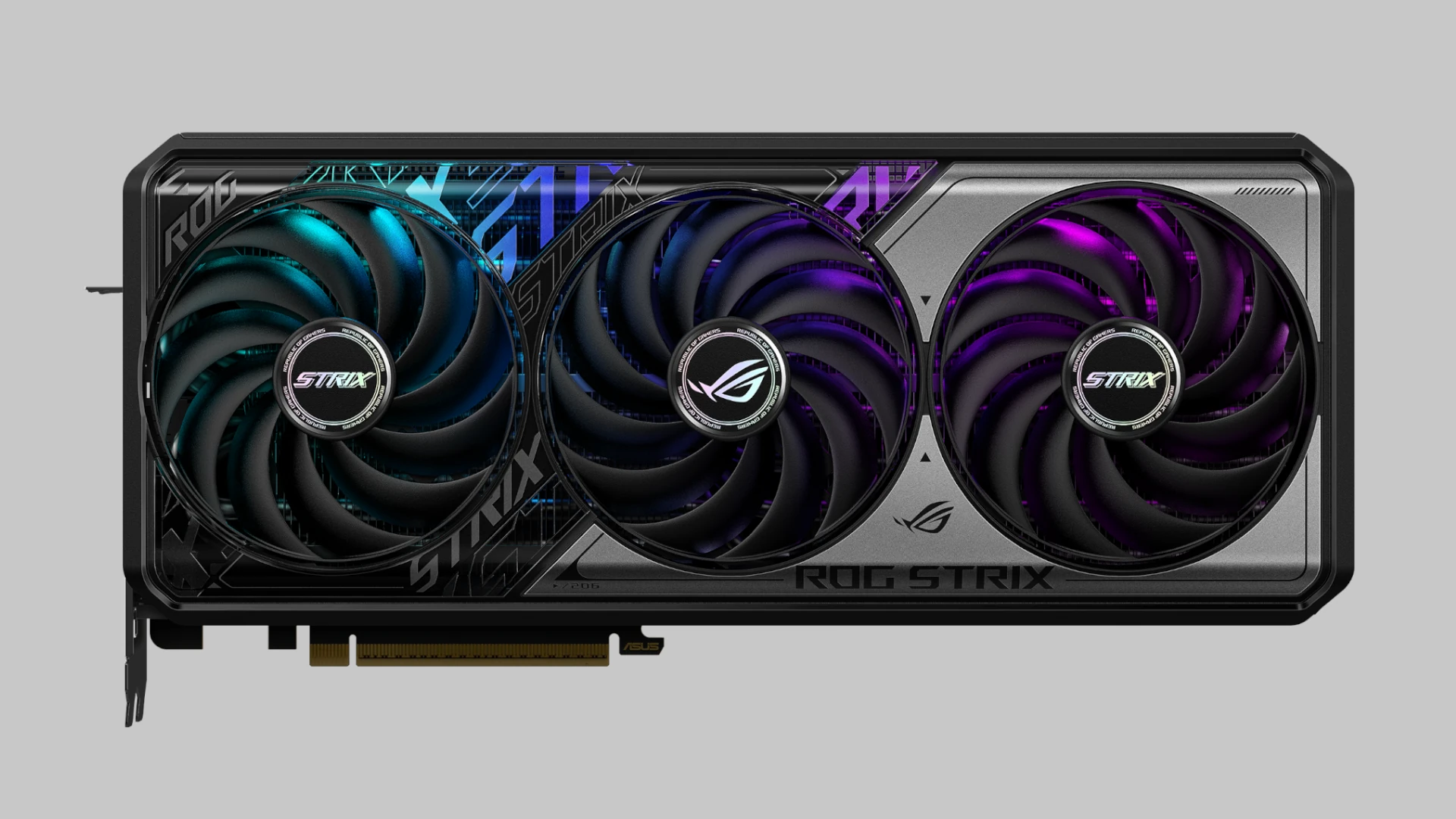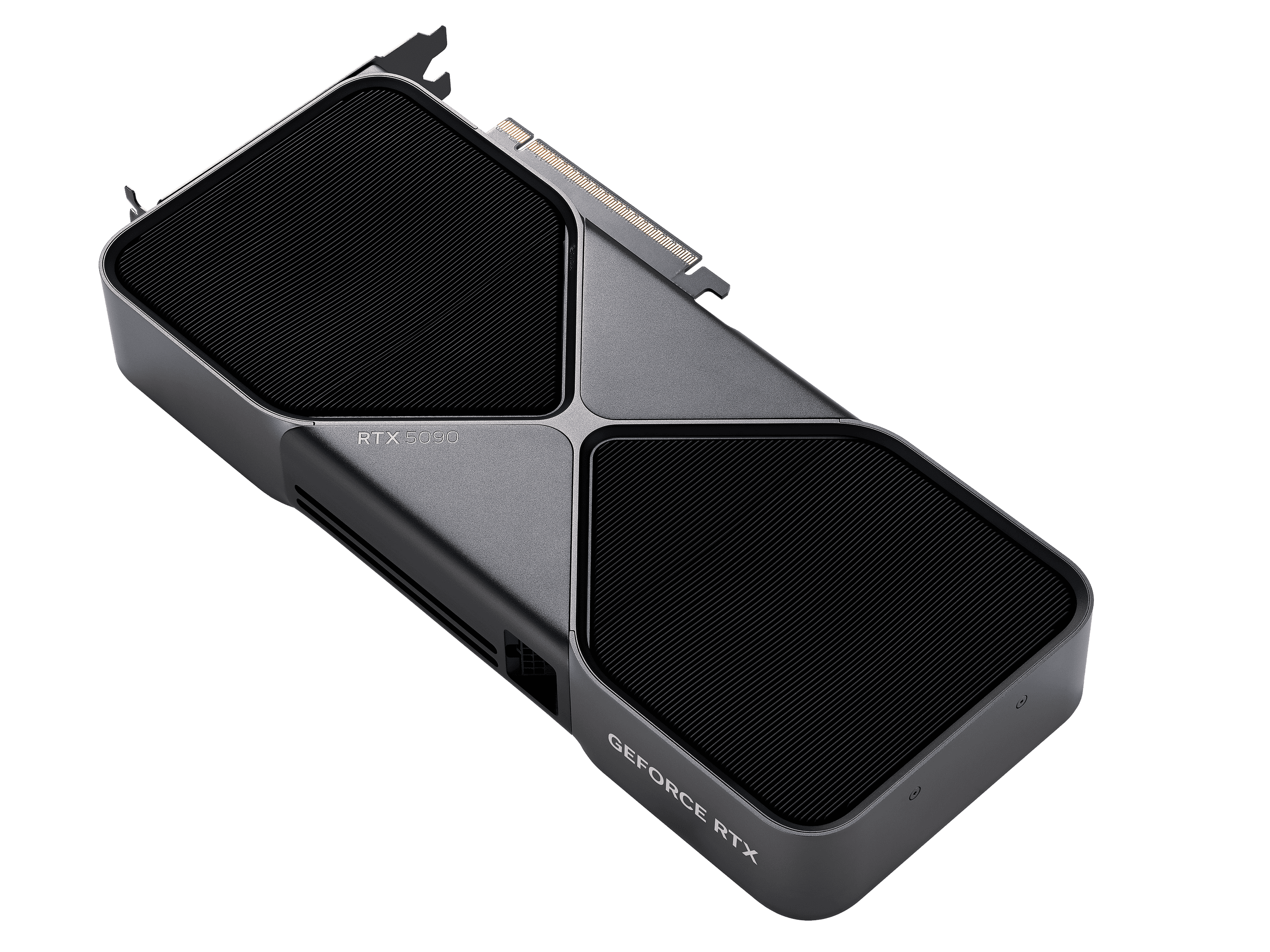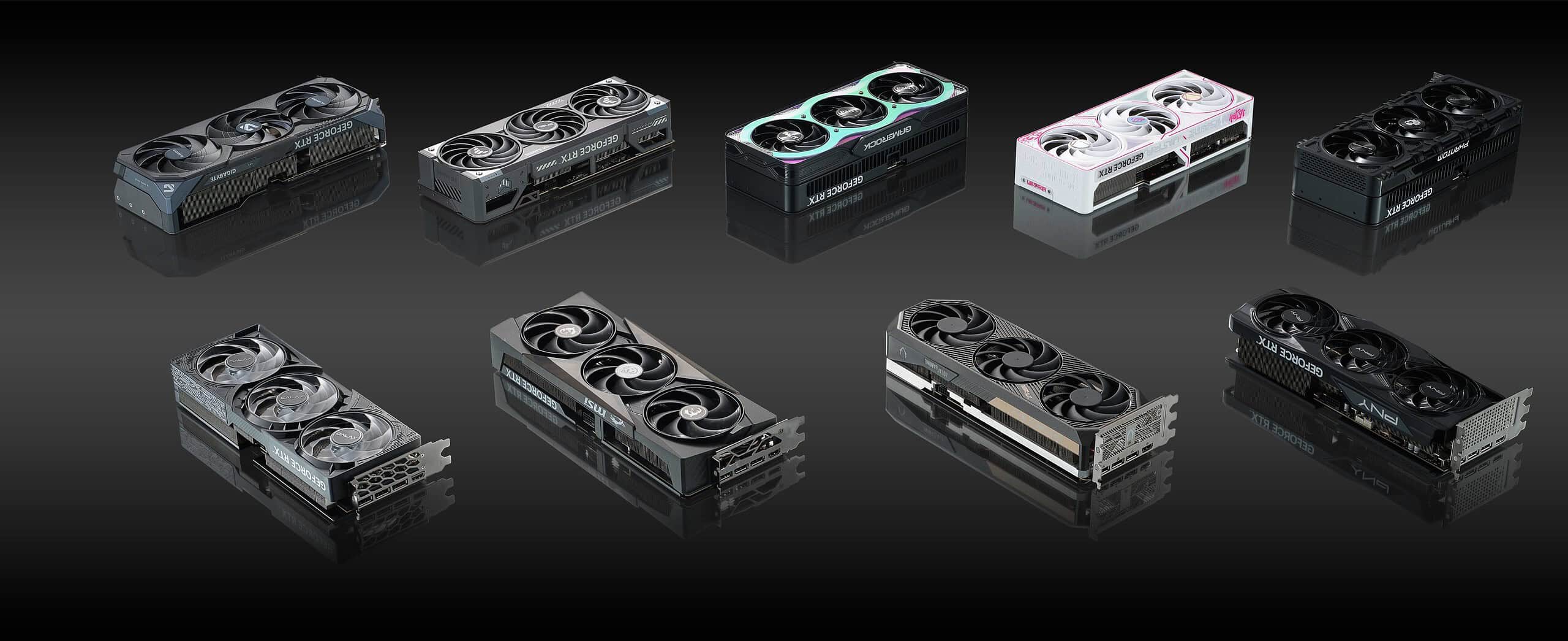Gamers, developers, and enterprise buyers should prepare to pay more for Nvidia graphics cards going forward. Industry reports confirm that Nvidia has initiated a price hike of 10–15% across a wide range of its GPUs—spanning everything from the upcoming GeForce RTX 50-series to high-end AI accelerators like the H200 and B200. The reason? Exploding costs tied to U.S. manufacturing, tariffs, and ongoing trade restrictions.

What’s Driving the Price Surge?
The root cause of these increases lies in Nvidia’s supply chain and geopolitical landscape. Taiwan Semiconductor Manufacturing Company (TSMC), Nvidia’s primary chip partner, has begun production out of its new Arizona facility. While intended to localize chipmaking for strategic and security reasons, manufacturing in the U.S. is turning out to be 30–50% more expensive than in Asia. These cost increases stem from:
- Higher labor costs in the U.S. versus Taiwan or South Korea
- Material and equipment logistics, including import duties
- Operational inefficiencies tied to the relatively new U.S. fabs
- Tariffs on components affecting both raw materials and assembled boards
According to TrendForce, chips made at the Arizona fab could end up costing Nvidia significantly more per unit, especially as TSMC passes along the costs of setting up U.S.-based manufacturing.
Export Restrictions Compound the Pressure
On top of these production costs, Nvidia is grappling with tightened U.S. export controls on AI chips destined for China—a market that previously represented billions in potential revenue. The U.S. government’s restrictions on selling chips like the A100 and H100 to Chinese firms have forced Nvidia to develop region-specific alternatives (such as the H20), which lack the same margin potential.
This double bind—higher costs and restricted markets—is compelling Nvidia to offset losses by raising prices in regions where demand remains strong.

Real-World Impact on GPU Pricing
Recent market data highlights how the hikes are already affecting retail prices:
| GPU Model | Old MSRP | Current Range | Price Change |
|---|---|---|---|
| RTX 5070 | $550 | $610–$750 | +11% to +36% |
| RTX 5080 | $799 | $880–$1,000 | +10% to +25% |
| RTX 5090 | $2,000 | $2,700–$3,200 | +35% to +60% |
Even older RTX 40-series cards have seen price creep at major retailers, with fewer discounts and tighter supply on mid-range models.
Global Ripple Effects
While these changes are rooted in U.S. economic pressures, they won’t stay confined to North America. The globalized nature of GPU production, distribution, and demand means that these increases are trickling out to Europe, Asia, and Latin America. Import taxes, shipping costs, and localized inflation may cause certain markets to see prices jump even higher.
Reddit threads and enthusiast forums are already filled with buyers in the UK and Germany reporting upward-trending prices—even for cards that should be depreciating with the RTX 50-series on the horizon.
Nvidia’s Position of Strength
Despite the higher prices, Nvidia is uniquely positioned to get away with the increase—for now. Demand for AI hardware is unprecedented, driven by large-scale adoption in cloud computing, generative AI, and enterprise software. At the same time, gamers still view Nvidia as the go-to choice for high-performance graphics, especially given the mixed reception to AMD’s competing offerings.
Nvidia’s dominance in CUDA-accelerated software, ray tracing, and AI-enhanced graphics features like DLSS gives it leeway to shift prices without immediately losing share.
What This Means for Consumers
For gamers: Expect higher retail prices for upcoming GPUs, particularly the RTX 5070 and RTX 5080, when they launch. Budget-conscious buyers may have to settle for older-generation cards or explore refurbished options.
For enterprise buyers: Increased costs will affect planning for AI clusters and datacenter builds. Companies budgeting for B200 and H200 GPUs should anticipate longer lead times and higher total cost of ownership.
For the industry: These price increases may push more developers to consider AMD’s ROCm stack or Intel’s growing AI acceleration efforts, but Nvidia’s lead in software and ecosystem integration still gives it the upper hand—for now.
As Nvidia continues to navigate a rapidly changing economic landscape, this new pricing strategy may be just the beginning. With more AI demand, more regulation, and more domestic production on the horizon, the GPU market could be entering a permanently more expensive era.
The Top Nvidia Graphics Card Values for Gamers
Choosing a graphics card can be tough. Nvidia makes some of the best options on the market, but with so many models available, it’s hard to know which one to pick. Price, performance, and features all matter when making this important decision for your PC.
The best Nvidia graphics card for you depends on what you need it for and how much you want to spend. Gamers might want something powerful like the RTX 5090 or the more affordable RTX 4070 Super. Budget-conscious buyers often find great value in slightly older models that still perform well for most tasks.
1. Nvidia GeForce RTX 5090
The GeForce RTX 5090 is Nvidia’s newest flagship graphics card powered by the advanced Blackwell architecture. It comes equipped with 32 GB of GDDR7 memory, making it suitable for intense gaming and creative workloads.
Starting at $1,999, this card sits at the premium end of the market. The price reflects its position as the most powerful consumer GPU currently available.
Performance-wise, the RTX 5090 is the first GPU that can actually outperform its predecessor, the RTX 4090. This makes it the undisputed king for those seeking maximum frame rates and graphical fidelity.
Power requirements are substantial. The card needs a 1000W power supply to run properly. This high power demand means users might need to upgrade their power supply when installing this GPU.
For gamers and creators who want the absolute best, the RTX 5090 delivers exceptional performance. It handles 4K gaming with ease and makes 8K gaming more accessible than previous generations.
Reviews consistently place this card in a class of its own. Its raw power and capabilities match its premium price tag, though not everyone needs this level of performance.
The physical size of the RTX 5090 is worth considering. Like previous flagship models, it occupies three or more PCIe slots and requires a spacious case with good airflow to keep temperatures in check.
For most gamers, the RTX 5090 might be excessive. Other cards in the 50-series lineup offer better value while still delivering excellent performance for modern games.
The raytracing capabilities have been further enhanced in this generation. Games with heavy raytracing effects run significantly smoother than on previous generation cards.
AI performance has also seen a major boost. The dedicated tensor cores help with both gaming features like DLSS and creative applications that leverage AI acceleration.
2. Nvidia GeForce RTX 5080
The RTX 5080 stands out as Nvidia’s high-end graphics card in the 50-series lineup. This powerful GPU has earned the PCMag Editors’ Choice award for its impressive performance in gaming and creative tasks.
Gamers will appreciate the RTX 5080’s ability to handle demanding titles at high frame rates. It offers significant improvements over previous generation cards, making it a smart upgrade for anyone seeking top-tier gaming performance.
Supply issues have affected availability, with the RTX 5080 being in extremely short supply since its release. This scarcity has made it challenging for many users to get their hands on one.
For creative professionals, the RTX 5080 delivers exceptional value. It features RTX accelerations in popular creative applications and comes with NVIDIA Studio drivers designed for stability in professional workloads.
Different manufacturers offer various models of the RTX 5080. A roundup test of five models showed that even more affordable versions like the Palit 5080 Gaming Pro perform well, with good overclocking potential and effective cooling.
Temperature management is a strong point for most RTX 5080 variants. The cards generally run cool and quiet even under load, which is important for maintaining performance during extended gaming or rendering sessions.
Power efficiency has improved compared to previous generations, though the card still requires a robust power supply. Users should check their system compatibility before upgrading.
The RTX 5080’s AI capabilities stand out thanks to its dedicated hardware. These features enhance gaming through DLSS and improve creative workflows with AI-assisted tools.
Budget-conscious shoppers might find the RTX 5080 expensive but can compare different models to find the best value. Some variants offer nearly identical performance at lower price points.
For those building a new high-end PC or upgrading from an older card, the RTX 5080 represents a substantial improvement in capabilities. It handles 4K gaming with ease and provides headroom for future demanding titles.
3. Nvidia GeForce RTX 4070 Super
The RTX 4070 Super sits in a sweet spot for many gamers looking for high performance without breaking the bank. Released as an upgrade to the original RTX 4070, this GPU offers more power while maintaining a similar price point.
Performance-wise, the 4070 Super ranks among the top gaming GPUs, falling just behind the premium RTX 4090 in terms of popularity according to Google Trends data. It delivers better framerates than its non-Super counterpart, making it a solid choice for 1440p gaming and entry-level 4K experiences.
Price differences between the standard 4070 and 4070 Super are typically around $50, which raises an important question for buyers: is the upgrade worth it? Many gamers find the performance boost justifies the small premium.
When shopping for a 4070 Super, cooling design matters. Some models feature triple-fan setups with larger heatsinks, while others use more compact designs. The PNY XLR8 version is considered one of the better options with its triple-slot design and premium build quality.
Pricing for the RTX 4070 Super typically starts around $630, as seen with models like the MSI Ventus 3X at Best Buy. This places it in the mid-range category for current-generation GPUs.
For content creators, the 4070 Super offers excellent capabilities beyond gaming. Its ray tracing performance and AI-powered DLSS 3 technology help boost framerates in supported games while maintaining visual quality.
The card fits nicely into NVIDIA’s broader RTX 4070 family, which includes the standard 4070, the 4070 Ti, and the 4070 Ti Super. Each step up provides incremental performance improvements at higher price points.
Power consumption remains reasonable for the performance level, making the 4070 Super compatible with most quality 650W+ power supplies. This efficiency is a plus for those concerned about electricity usage or heat output.
4. Nvidia GeForce RTX 5070 Ti
The GeForce RTX 5070 Ti is NVIDIA’s newest mid-to-high end graphics card in the 50-series lineup. It uses the new Blackwell architecture and comes with 16GB of GDDR7 memory, giving gamers plenty of headroom for modern titles.
At $749, this card sits between the standard 5070 and the pricier 5080 models. Many reviewers consider it a strong value option for 4K gaming, especially compared to the much more expensive RTX 5080 and 5090.
Performance-wise, the 5070 Ti really shines at 1440p resolution. It handles most modern games at high frame rates with settings maxed out. The card also works well for high-refresh 1080p gaming, making it perfect for competitive gamers who want every frame they can get.
One of the biggest improvements with this generation is the AI performance. The RTX 5070 Ti has better ray-tracing capabilities and DLSS support compared to previous generations, which helps boost frame rates in supported games.
Power efficiency has improved too. The card draws less power than you might expect for its performance level, which means less heat and noise in your system.
Some buyers have criticized the launch pricing as excessive, though. Many feel NVIDIA could have positioned it at a lower price point, especially considering the competition.
Several manufacturers offer their own versions of the RTX 5070 Ti. ASUS makes a Prime model that comes with a dual-fan cooling setup and solid build quality.
The RTX 5070 Ti works well for content creators too. The extra VRAM helps with video editing and 3D rendering tasks, making it a versatile card for both gaming and productivity.
For most gamers looking to play at 1440p or entry-level 4K, this card hits a sweet spot of performance without the eye-watering price of NVIDIA’s flagship models.
5. Nvidia GeForce RTX 4090 DirectX 12.0
The GeForce RTX 4090 currently sits at the top of Nvidia’s graphics card lineup. It’s widely considered the ultimate GPU for gamers who want the absolute best performance without compromise.
This powerhouse card creates a significant performance gap between itself and other Nvidia GPUs. Testing shows it’s about 35% faster than the next closest Nvidia graphics card in gaming benchmarks.
The RTX 4090 excels at running games at high frame rates while maintaining cool temperatures. Gamers praise its ability to handle demanding titles without overheating, making it a great gaming card for those who can afford it.
With DirectX 12.0 support, this card takes full advantage of the latest gaming technologies. The advanced features help create more realistic lighting, shadows, and effects in modern games.
The card brings a huge leap in performance compared to previous generations. It also improves efficiency and introduces AI-powered graphics capabilities that enhance visual quality.
Price-wise, the RTX 4090 typically costs around $1599, putting it firmly in the premium segment. This makes it a significant investment even for enthusiast gamers.
The RTX 4090 is designed to handle detailed virtual worlds with ease. Its massive computing power makes it ideal for both gaming and content creation tasks that demand serious graphical horsepower.
For those seeking the absolute peak of graphics performance in 2025, the RTX 4090 remains the card to beat. Its combination of raw power and advanced features keeps it at the top of GPU benchmark charts.
6. Nvidia GeForce RTX 4080 (laptop)
The RTX 4080 laptop GPU sits near the top of Nvidia’s mobile graphics lineup. It offers desktop-class performance in a portable form factor, making it ideal for gamers and creators who need serious power on the go.
For laptop buyers in 2025, the RTX 4080 mobile chip represents an excellent balance of power and efficiency. It ranks as the best overall mobile GPU according to PC Gamer, thanks to its strong implementation of Nvidia’s Ada Lovelace architecture.
Gaming performance is exceptional with this card. It handles demanding titles at high settings with ease, even when pushing high refresh rate displays. Many RTX 4080 laptops come with impressive screens to match the GPU power.
Ray tracing features shine on this card. The improved RT cores handle complex lighting scenarios much better than previous generations, while DLSS 3 helps maintain smooth frame rates even with ray tracing enabled.
Battery life is somewhat better than expected given the power level. Nvidia’s efficiency improvements help extend runtime when not plugged in, though demanding games will still drain the battery quickly.
Popular laptop models with the RTX 4080 include the ASUS ROG Strix 18″ with its QHD 240Hz display and the Lenovo Legion Pro 7i, which many reviewers consider a top choice for this GPU.
Price is a consideration with RTX 4080 laptops. They typically cost significantly more than models with RTX 4070 or 4060 GPUs. However, the performance jump can justify the extra cost for serious users.
Reddit users have noted that the mobile 4080 offers excellent price-to-performance compared to other GPUs in the current generation. This makes it worth considering for those with the budget.
Content creators will appreciate the GPU’s video encoding capabilities and large VRAM pool. These features help with rendering times and handling complex creative workloads.
Heat management varies between laptop models. The RTX 4080 generates significant heat under load, so look for laptops with robust cooling systems to maintain performance during long sessions.
For those considering this GPU, it’s worth visiting Nvidia’s laptop showcase to see the range of available RTX 4080 models from different manufacturers.
7. Nvidia GeForce RTX 4090 Ti
The RTX 4090 Ti is an anticipated high-end graphics card from Nvidia that builds upon the already powerful RTX 4090. While not officially released at the time of writing, it’s expected to push performance boundaries even further.
Rumors suggest the 4090 Ti will feature more CUDA cores than the standard 4090, potentially offering 15-20% better gaming performance. This would make it the fastest consumer GPU available when launched.
Power requirements are likely to increase as well. The standard 4090 already needs a robust power supply, and the Ti variant might push those needs higher. PC builders should plan for adequate cooling and power delivery.
Price is another major factor to consider. The RTX 4090 already sits at the premium end of the market, and the Ti version will almost certainly command an even higher price tag. This puts it firmly in enthusiast territory.
For gamers seeking ultimate performance regardless of cost, the 4090 Ti will likely become the new benchmark. It should handle 4K gaming at high frame rates and may even make 8K gaming more feasible.
Content creators will also benefit from the increased power. Video editing, 3D rendering, and AI workloads should see noticeable improvements over the standard 4090.
Availability might be limited initially, as is common with Nvidia’s highest-end offerings. The existing RTX 4090 models from partners like Asus, MSI, and Gigabyte give us a preview of what to expect.
Physical size is another consideration. The 4090 is already massive, and the Ti variant will likely maintain or increase those dimensions. PC case compatibility should be carefully checked before purchase.
8. Nvidia GeForce RTX 4070 Ti SUPER
The RTX 4070 Ti SUPER sits in the middle of Nvidia’s 40-series lineup. Released in early 2024, it offers a step up from the standard 4070 Ti with improved specs and performance.
This card comes with 16GB of GDDR6X memory, a significant upgrade from the 12GB found in the original 4070 Ti. The extra memory helps with demanding games and creative applications.
Various brands make their own versions of the 4070 Ti SUPER. You can choose from PNY, Gainward, Asus, and Gigabyte models, each with different cooling solutions and designs.
Size matters when picking a 4070 Ti SUPER. Some models are larger and heavier than others, so check if it will fit in your PC case before buying.
The card handles 4K gaming well. Most modern games run smoothly at high settings, making it a good choice for gamers with 4K monitors.
Power efficiency is a strong point for the 4070 Ti SUPER. It delivers excellent performance without consuming as much electricity as top-tier cards.
For creative work, the 16GB memory buffer helps with video editing and 3D rendering. This makes it a solid choice for content creators on a budget.
Pricing typically falls between $800-$900 depending on the model and store. While not cheap, it offers good value compared to higher-end options like the 4080 and 4090.
The ASUS TUF Gaming version stands out for its price-to-performance ratio. It includes effective cooling and modest factory overclocking.
You can find the 4070 Ti SUPER at major retailers like Best Buy. Online shopping often provides more options than local stores.
Nvidia includes technologies like DLSS 3 and Frame Generation with this card. These features can boost frame rates in supported games without sacrificing visual quality.
Ray tracing performance is strong on the 4070 Ti SUPER. While not as fast as the 4080 or 4090, it handles ray-traced lighting effects well at 1440p and sometimes at 4K with DLSS enabled.
9. Used Nvidia GeForce RTX 3080 (best value)
The RTX 3080 stands out as an excellent value option on the used market in 2025. This powerful GPU continues to handle modern games with ease, making it a smart choice for budget-conscious gamers.
Price trends show the RTX 3080 10GB model selling for around 340-475 USD on the used market. These prices represent a significant drop from its original retail cost, creating an opportunity for savvy shoppers.
Performance-wise, the 3080 remains competitive even against newer cards. With 10GB of GDDR6X memory and powerful ray tracing capabilities, it handles 1440p gaming beautifully and performs well at 4K resolutions too.
When shopping for a used 3080, look for cards from reputable sellers. The Founders Edition model often sells for around $475, while partner cards like the EVGA FTW3 Ultra can be found for approximately $550.
The age of these cards is worth considering. Most RTX 3080s have been in use since late 2020, so check for any signs of heavy mining use or thermal issues when purchasing.
For those willing to spend a bit more, the 12GB variant sells for about $416 on the used market. The extra memory provides a small performance boost in memory-intensive applications and future-proofs the card slightly better.
Many gamers find the 3080 hits a sweet spot of price-to-performance ratio. It outperforms the RTX 3070 by a significant margin while costing much less than a 3090 or newer 4070 Ti.
Cooling is important with this power-hungry card. Models with robust cooling solutions from MSI, ASUS, or EVGA tend to maintain better temperatures and longevity.
The RTX 3080 supports DLSS, which helps boost frame rates in supported games. This feature extends the useful life of the card, letting it handle future titles more effectively.
Power consumption runs higher than newer cards, requiring around 320 watts under load. Make sure your power supply can handle this demand before purchasing.
Price tracking tools show various models ranging from $550-700 depending on condition and model. Patience and research can help find the best deals.
10. Nvidia GeForce RTX 3060
The RTX 3060 is a solid mid-range GPU that offers great value for gamers who want good performance without breaking the bank. It comes with 12GB of GDDR6 memory, which is generous for a card in this price range.
This card features enhanced Ray Tracing Cores and Tensor Cores, making it capable of handling ray-traced games at 1080p and 1440p resolutions. The 3060 also supports DLSS technology, which helps boost frame rates in supported games.
Different manufacturers offer their own versions of the RTX 3060. Some popular brands include MSI, ASUS, and Zotac. Each adds their own cooling solutions and slight tweaks to the base design.
The MSI Gaming GeForce RTX 3060 runs at a boost clock of 1807 MHz and features DisplayPort and HDMI outputs. This makes it compatible with most modern monitors.
For those looking at specific models, the Zotac Amp White version has received praise for its PCB design compared to other 3060 cards. The unique white aesthetic also appeals to builders creating themed PC builds.
ASUS offers the Dual Overclock model, which comes with a factory overclock for slightly better performance out of the box. Its dual fan design helps keep temperatures in check during gaming sessions.
Power requirements for the RTX 3060 are reasonable, typically needing only a 550W power supply. This makes it an easy upgrade for many existing systems without requiring a power supply replacement.
The 3060 performs well in popular games at 1080p resolution, often delivering over 60 fps in demanding titles with high settings. It can also handle 1440p gaming, though you might need to adjust some settings in the most demanding games.
For creative work, the 12GB of memory proves helpful in video editing and 3D modeling tasks. While not as powerful as higher-end cards, it offers good performance for hobbyist content creators.
Understanding NVIDIA Graphics Cards
NVIDIA graphics cards follow a specific naming system that helps identify their generation and performance level. The series number indicates the generation, while the model number shows the performance tier within that generation.
Key Features to Consider
When shopping for an NVIDIA GPU, several key specifications deserve attention. The first number in the model name indicates the generation – higher means newer technology. For example, RTX 30 series is newer than RTX 20 series.
VRAM capacity affects how many textures and assets the card can handle. Most modern games need at least 8GB for high settings at 1080p.
Power requirements matter too. The RTX 4070 uses only 200W while delivering excellent performance, making it energy efficient.
Look for:
- CUDA cores (more = better parallel processing)
- Memory bandwidth (higher = faster texture loading)
- Ray tracing cores (for realistic lighting effects)
- Clock speeds (base and boost)
Benefits of NVIDIA GPUs
NVIDIA cards offer several advantages that make them popular among gamers and professionals. Their DLSS (Deep Learning Super Sampling) technology uses AI to boost frame rates while maintaining visual quality.
RTX cards lead in gaming performance thanks to advanced technologies like ray tracing. This creates realistic lighting, reflections, and shadows that transform gaming visuals.
NVIDIA’s driver support is exceptional, with frequent updates that optimize performance for new game releases. Their software suite includes GeForce Experience, which automatically optimizes game settings based on your hardware.
NVIDIA GPUs work with G-Sync monitors to eliminate screen tearing and stuttering, creating a smoother gaming experience. They also excel in productivity tasks like video editing and 3D rendering.
Comparing NVIDIA Series
NVIDIA’s graphics card lineup has evolved significantly over the years with distinct performance jumps between generations and feature differences between RTX and GTX models.
Performance Across Generations
The leap between NVIDIA generations often brings substantial performance improvements. The RTX 30 series delivered roughly 1.5-2x the performance of the RTX 20 series in many games. Now, the RTX 40 series pushes things even further with better ray tracing and AI capabilities.
For example, an RTX 4060 can sometimes struggle with VRAM limitations compared to older cards with more memory. This shows that newer isn’t always better for every situation.
Budget-conscious gamers might find excellent value in previous generation high-end cards. A used RTX 3080 often outperforms a new RTX 4060 while potentially costing less.
The GPU benchmark hierarchy shows that certain older flagship models still rank competitively against newer mid-range options.
Differences Between RTX and GTX
The main distinction between RTX and GTX cards is specialized hardware. RTX cards include dedicated RT cores for ray tracing and Tensor cores for AI-powered features like DLSS (Deep Learning Super Sampling).
GTX cards lack these specialized cores, making them unable to efficiently handle ray tracing or use NVIDIA’s DLSS technology. This significantly impacts visual quality and performance in modern games.
The RTX series supports more advanced technologies like NVIDIA Broadcast for streamers and better encoding capabilities for content creators.
Memory technology also differs, with newer RTX cards featuring faster GDDR6X memory on higher-end models. This provides more bandwidth for handling complex graphics tasks.
For creative professionals, RTX cards offer stronger performance in AI tasks and rendering applications, making them better suited for work that goes beyond gaming.
Frequently Asked Questions
Nvidia offers graphics cards at various price points and performance levels to match different gaming needs. Users often need guidance on selecting the right card for their specific requirements.
What are the top performance Nvidia graphics cards for high-end gaming?
The Nvidia GeForce RTX 5090 currently stands as the ultimate performance champion for serious gamers. It delivers exceptional frame rates even at 8K resolution with ray tracing enabled.
The RTX 5080 follows closely behind with impressive performance that can handle virtually any modern game at 4K resolution with high settings.
For those seeking established technology, the RTX 4090 remains a powerhouse with its 24GB VRAM and advanced ray tracing capabilities.
Which Nvidia card offers the best value for gamers on a budget?
The RTX 4070 Super provides excellent value, offering strong 1440p performance and capable 4K gaming at a much lower price than flagship models.
This card handles most modern titles with high settings while supporting key features like DLSS and ray tracing without breaking the bank.
Many gamers find the balance of performance and affordability makes the 4070 Super an ideal choice for mainstream gaming setups.
How does the GeForce RTX 4090 compare to other Nvidia models?
The RTX 4090 DirectX 12.0 features 24GB of GDDR6X memory and remains one of the most powerful graphics cards available, despite newer releases.
It outperforms the RTX 4070 Super by roughly 60-70% in most benchmarks but costs significantly more.
When compared to the newer RTX 5080, the 4090 still holds its own in raw performance but lacks some of the efficiency improvements and newest features.
What’s the best Nvidia graphics card for achieving smooth gameplay at 4K resolution?
The RTX 5080 offers the ideal balance of performance and price for dedicated 4K gaming, maintaining 60+ FPS in demanding games.
For those wanting no compromises, the RTX 5090 ensures silky-smooth 4K gaming with headroom for maximum settings and ray tracing effects.
The RTX 4090 remains a strong contender for 4K gaming as well, particularly when paired with DLSS technology to boost frame rates.
Can you recommend an Nvidia graphics card suitable for gaming laptops?
Mobile versions of the RTX 4070 provide excellent performance for gaming laptops while maintaining reasonable power consumption and heat output.
Higher-end gaming laptops may feature the mobile RTX 4080 or 4090, though these typically come in thicker, heavier laptop designs with advanced cooling systems.
Battery life considerations make the RTX 4060 mobile an attractive option for gamers who need portability without sacrificing too much performance.
Considering the latest releases, which Nvidia graphics card is considered the most powerful?
The Nvidia GeForce RTX 5090 currently holds the title as the most powerful consumer graphics card on the market.
It features groundbreaking improvements in ray tracing performance, AI processing capabilities, and raw rendering power compared to previous generations.
Professional users benefit from its massive VRAM capacity and unprecedented computational abilities for tasks beyond gaming, including 3D rendering and AI workloads.







